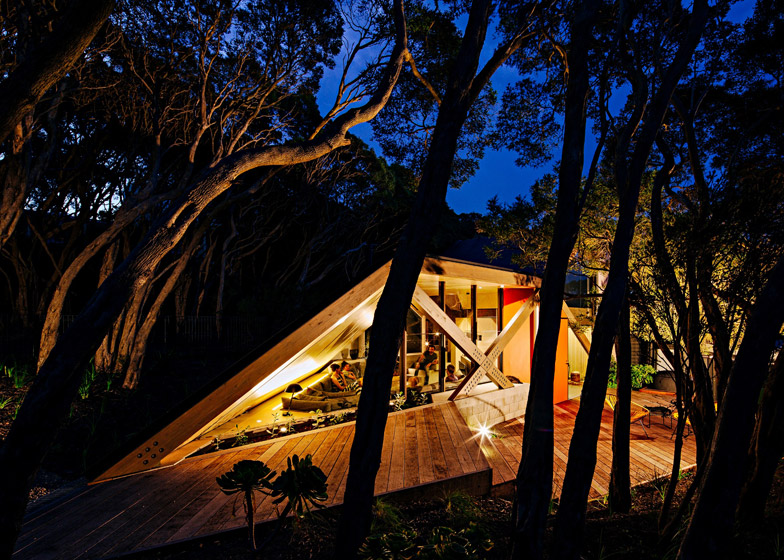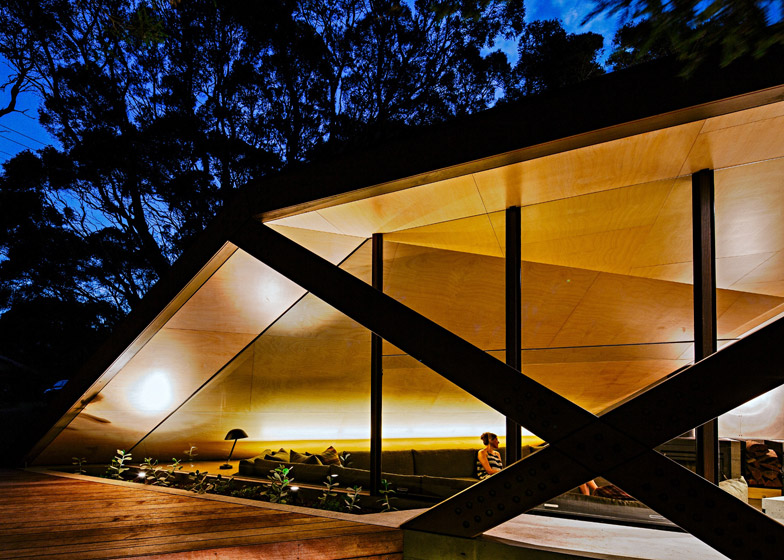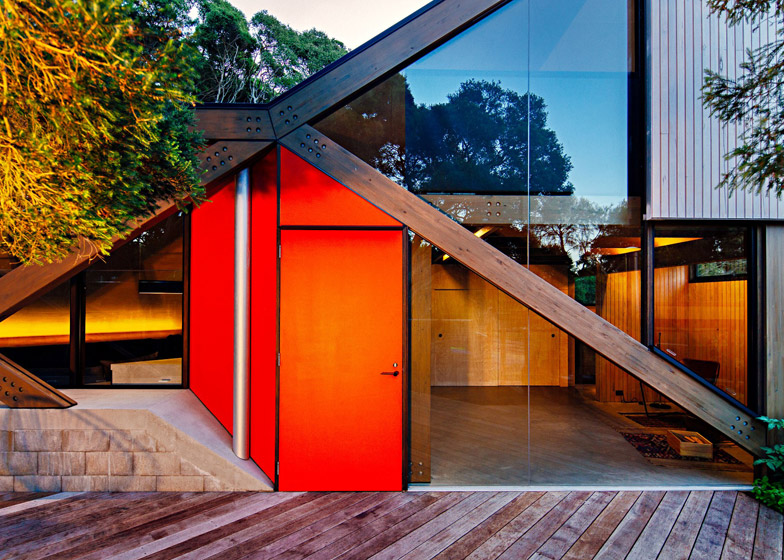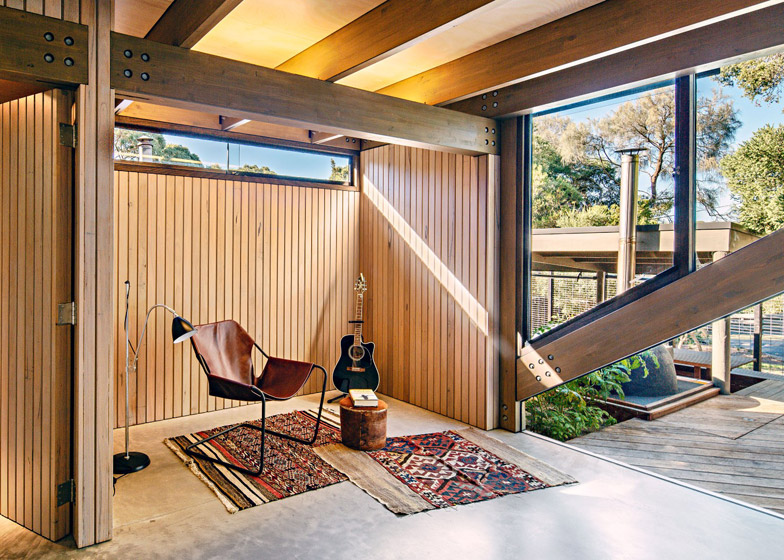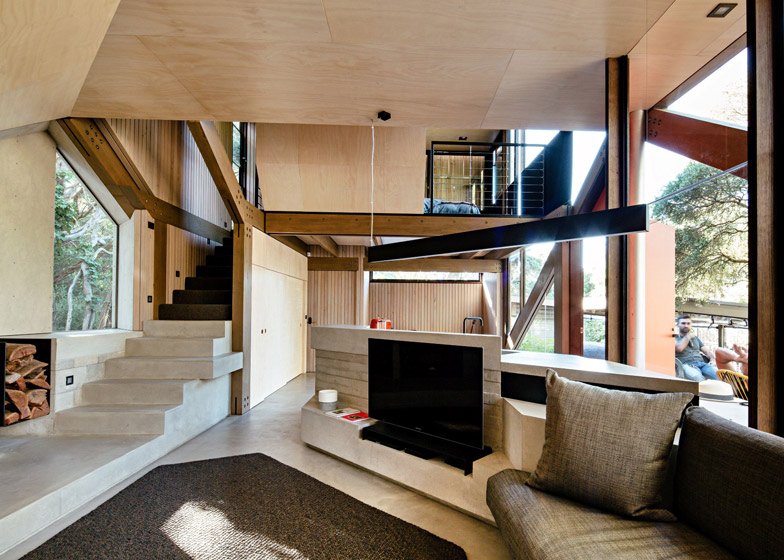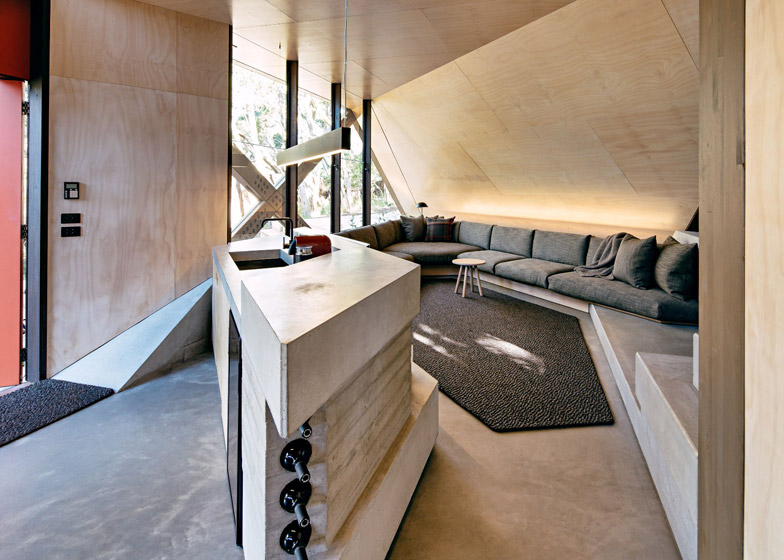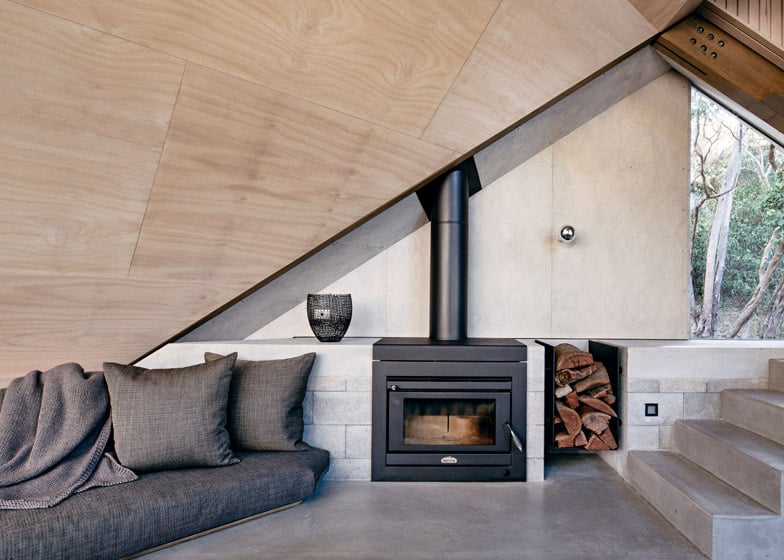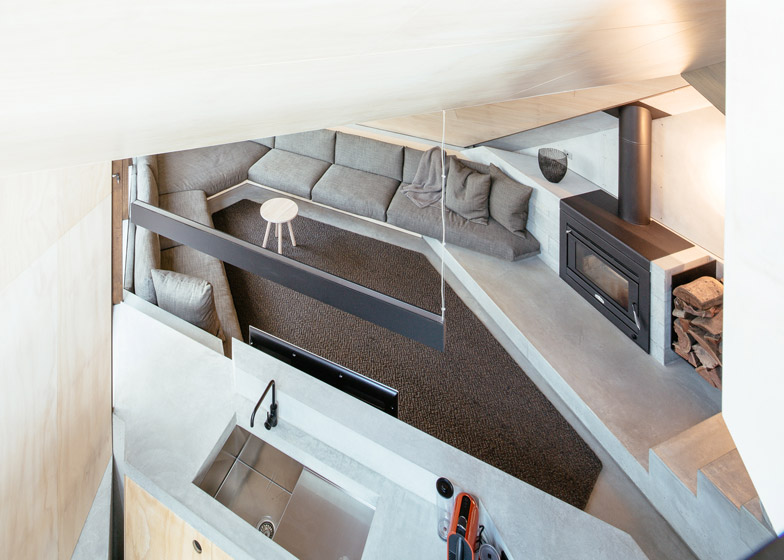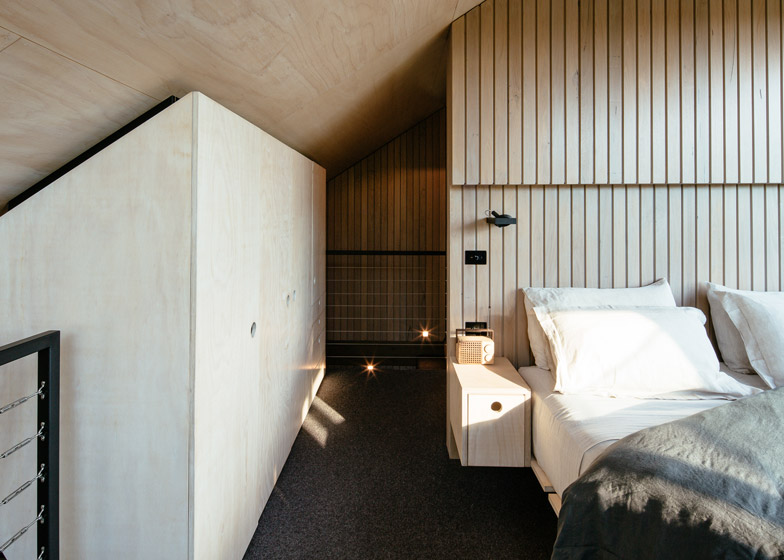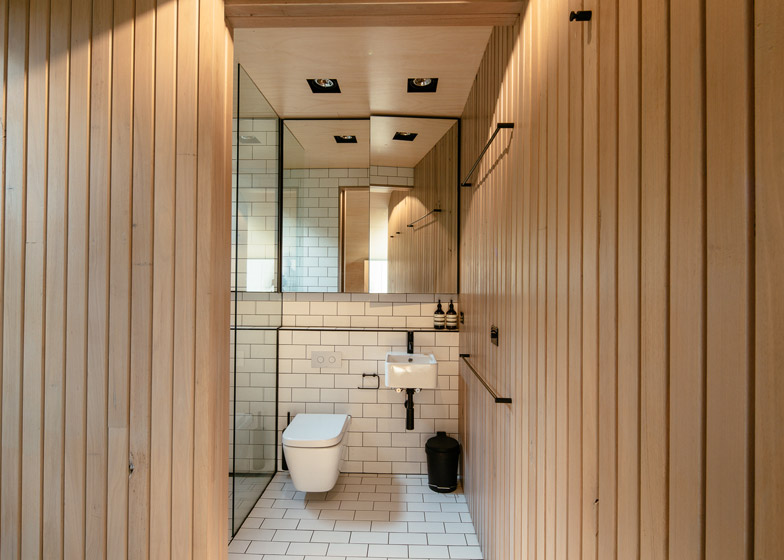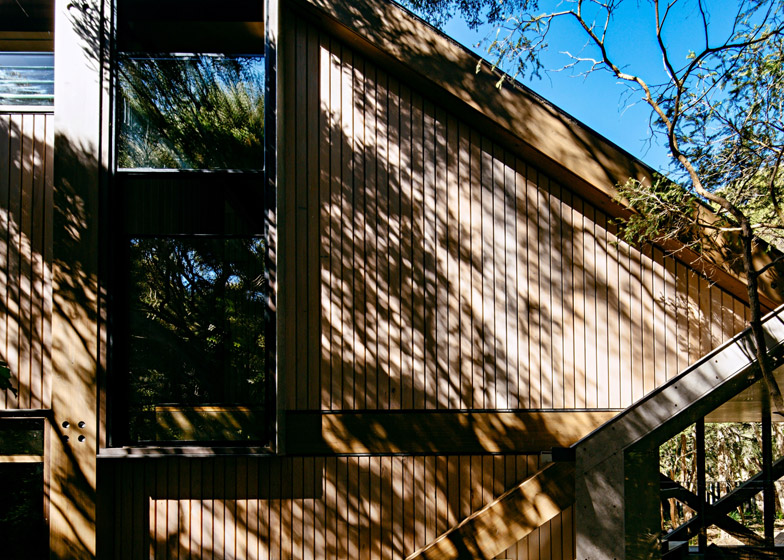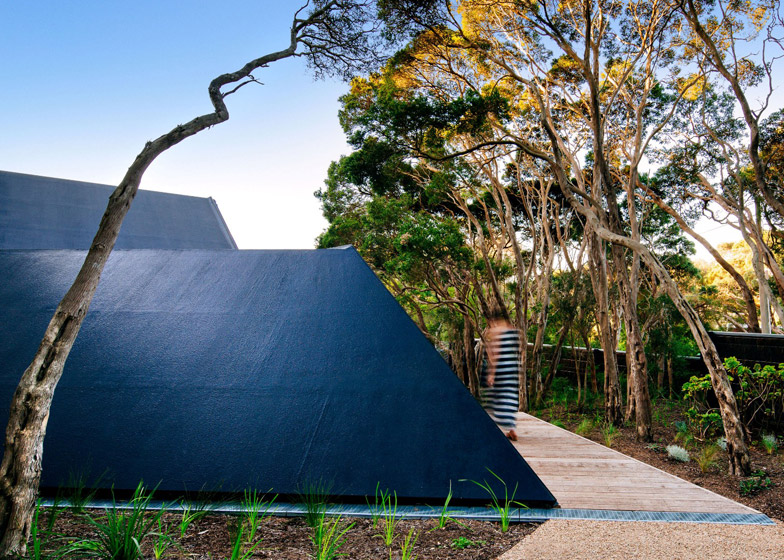Designed as an annex for a 1960s log cabin, this angular timber and cast-concrete structure by Maddison Architects is nestled among the undergrowth of a forest in Victoria, Australia (+ slideshow).
Cabin 2 by Melbourne-based studio Maddison Architects is a self-contained apartment that provides overflow accommodation for the client's existing cabin.
Rather than simply extending the original property, the architects wanted to separate the new structure from the old, "to retain and express their individual identities." An internal passageway provides a link between the two living areas.
The retreats are set into a slope forested with indigenous Moonah trees in the coastal village of Blairgowrie, 85 kilometres outside Melbourne. More holiday homes are dotted through the dense vegetation.
"The surrounding coastal Moonah woodland camouflages a suburban-like density of houses and network of winding roads free of formed kerb, gutters and footpaths," said the architects.
The timber structure slopes gently from the lowest part of the site, building into a timber-clad block that provides the necessary height for a mezzanine sleeping platform.
The network of dark criss-crossing joists is left largely exposed, creating an angular framework that supports large panes of glass and a bright red door.
To minimise the footprint of the structure and help to integrate it with the wooded setting, the ground-floor living space is dug partially into the slope of the site.
"The folding roof grows out from the topography to act as a new type of landform," explained the architects.
"The roof directly reflects the internal volume and the program of functions underneath, which lead upstairs to the elevated bedroom offering extensive valley views."
Inside, pale plywood lines the folded underside of the roof structure, while the floor is poured concrete.
The cast in-situ concrete integrates elements including a kitchen island, staircase and hearth, and also encompasses an external seat and planter.
Custom-built timber furniture and brightly coloured upholstery were chosen by the interior designer client to complement the structure.
"Rather than being a treatment added on, the interior surfaces carry the inherent nature of their components through with them, pushing an agenda of integral function between the outside and inside of the building," said the architects.
Areas of decking stretch into a landscaped garden planted with indigenous species. Rain water is harvested in rooftop tanks, for use in the garden.
Photography is by William Watt.

